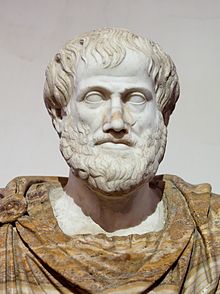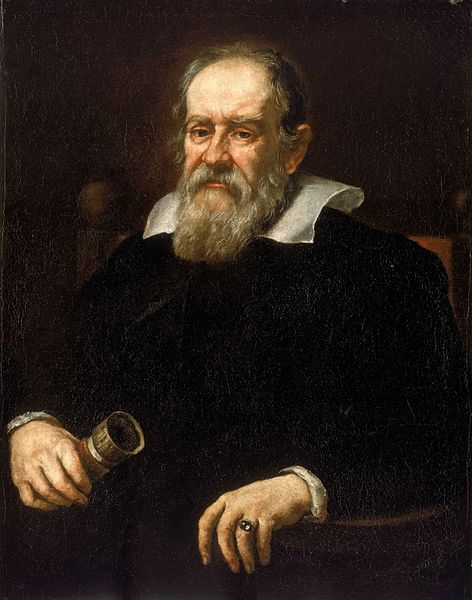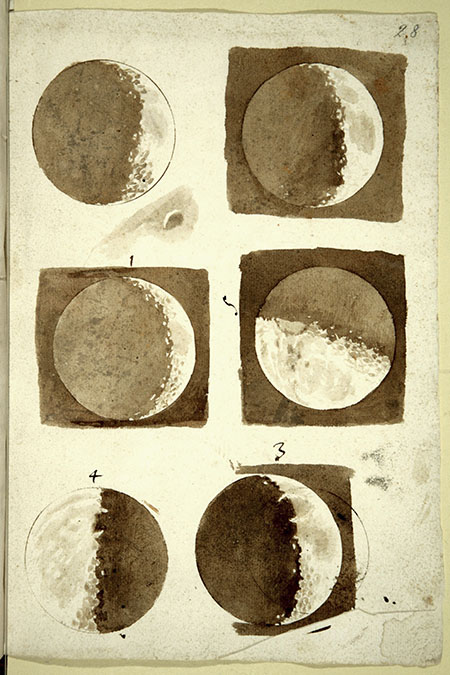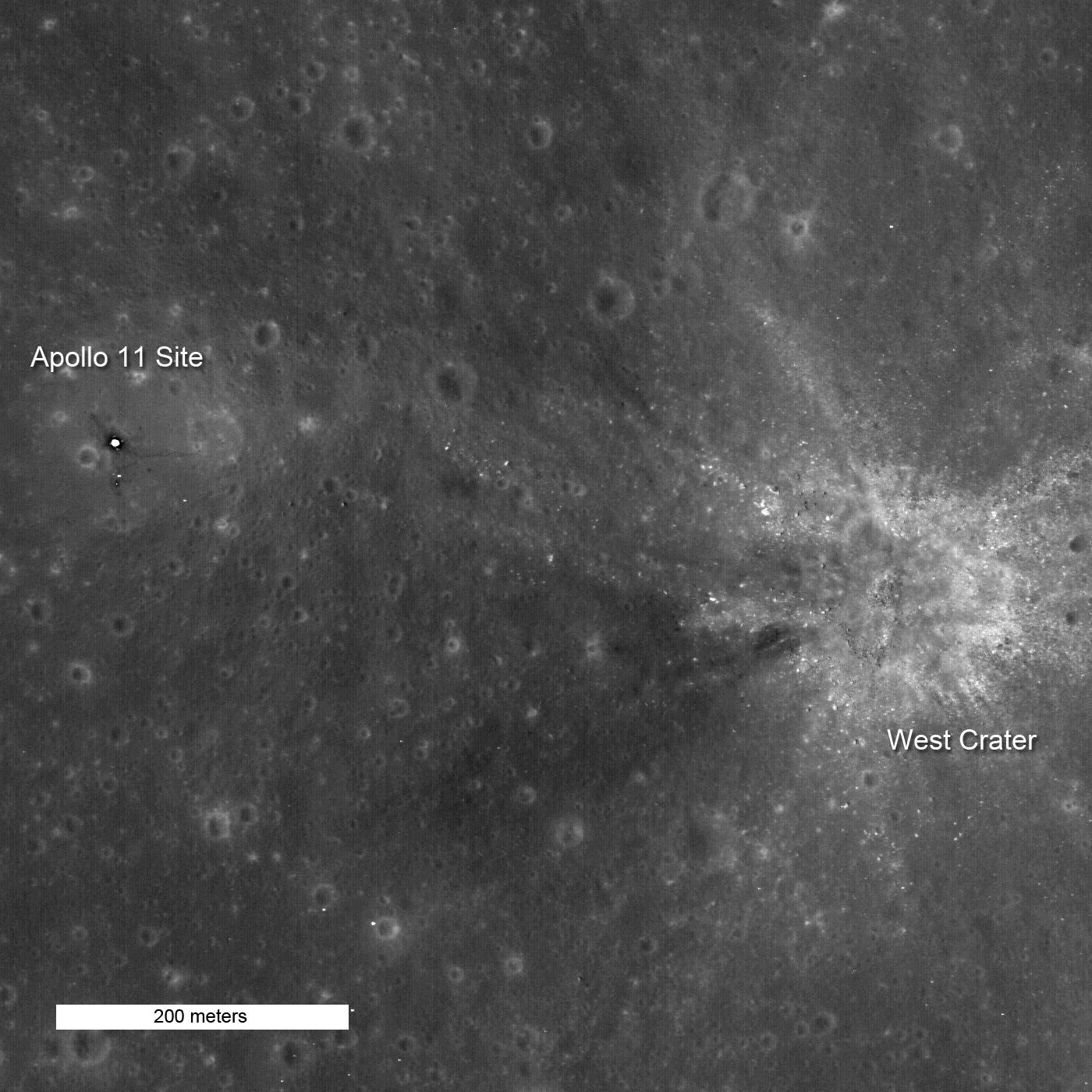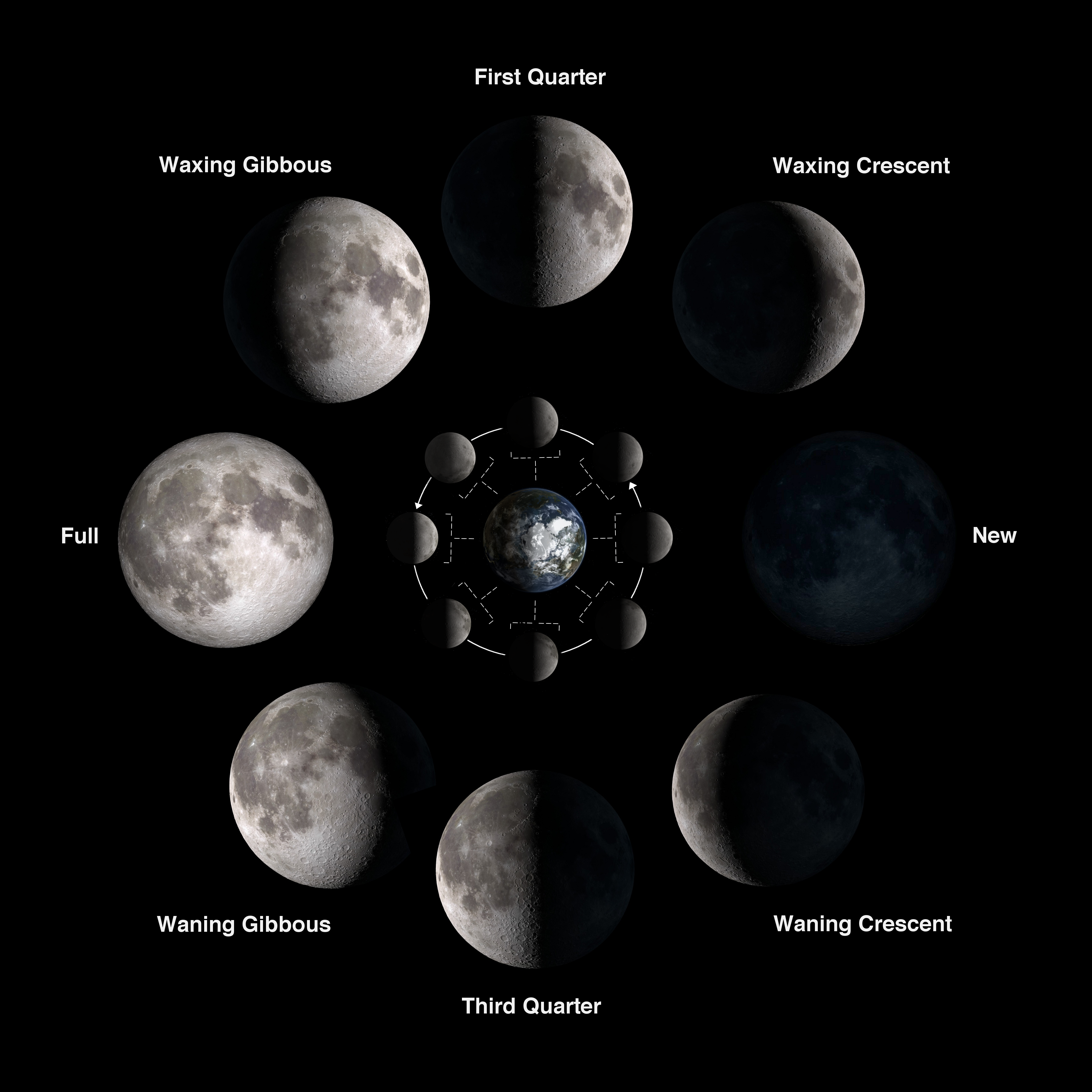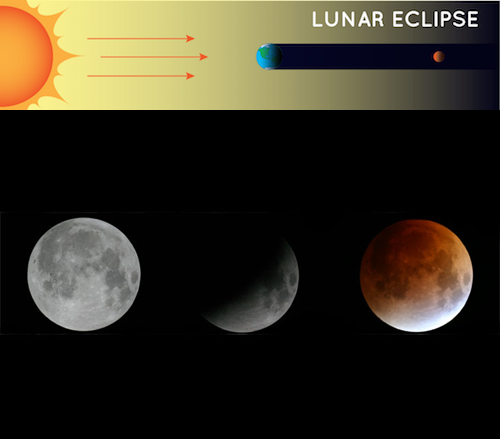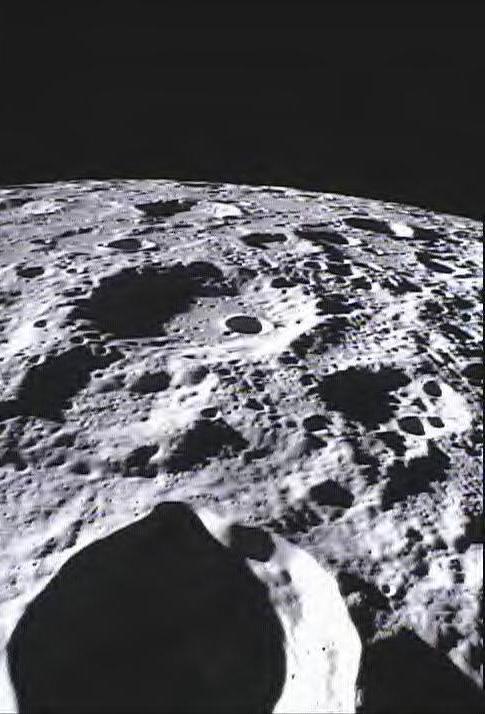Earth and The Moon
By Jennifer Ackerman, Haley Kondra, Sarah Dorward, Michael Haugen, Alyson Hastings, Erika White and Jamie Tallman
The relationship between the Earth and Moon has interested humans for ages. Not only is it something visible from Earth without the use of a telescope, but it is the most easily accessible celestial body from Earth, making it extremely influential in our knowledge of effective ways to explore our universe. The information, images, and videos provided below offer an example and explanation of the knowledge astronomers have gained over centuries. Noting the development in our understanding of this celestial body, and the way it has increased astronomical familiarity with our solar system, the information provided below also works to demonstrate the way in which the Moon has played an integral role in our understanding of time, art, and even religion.
Scientific Exploration of the Moon
It is believed that the Moon is approximately 4.5 billion years old. Modern theories suggest that it is almost as old as the Earth itself. Its existence predates any historical documentation which means that it really comes down to scientific inquiry to attempt to determine when the Moon was formed. Examining the history of human observation of and interaction with the Moon functions as a reliable history of the celestial body.
The Moon has been in existence for all of man’s time on Earth. The moon seen by our early ancestors is the same Moon we see today. Throughout our history, it has proven to be a part of our world that many want to understand. From the earliest recorded time to the present, astronomers have focused on observing and understanding the Moon. Many hypotheses have been developed over time, as our technology and knowledge of the solar system has developed.
The Past and Early Astronomers
As far as we know, humans have always had a fascination with the Moon. Early references to it began to surface as early as 1000 BCE. Some cultures began searching for answers as to what exactly this bright object in the sky was. In about 600 BCE, the Greeks suggested that the Moon was spherical, and that it revolved around the Earth.1
As interest in scientific properties of the Moon developed, public interest in the creative and mysterious elements of the celestial body grew as well. The Moon quickly became part of cultural practices. Religion, for example, was highly influenced by the sky and each component of it. One of these groups, the Desana Indians of Columbia, compares the sky to a brain, having two hemispheres that are divided by the Milky Way. They believe this keeps their brain connected with the sky.¹ Similarly, religions such as Christianity, Islam, and Judaism all use imagery of the Moon in scripture.2 The Moon also influenced art, music, architecture, myths, and ceremonies of various kinds.1
Aristarchus
Years later, in 270 BCE, Greek scholar Aristarchus used the measurements of the Earth’s shadow, along with the time required for the Moon to travel through its shadow during eclipses, as a way to estimate the size of the Moon. He also aimed to show the distance between eclipses which was then used to help develop a sense of calendars.1
Aristotle
Aristotle is one of the most celebrated ancient philosophers. He believed in the geocentric theory which states that the Earth is at the center of the universe and all the stars, planets, the Sun and the Moon, orbit around it. He also believed that the planets and the Moon were perfect spheres, but that the Earth was imperfect.3 Based on this belief, Aristotle suggested that the dark spots on the Moon were simply areas where light was absorbed and emitted differently.4
Galileo
Galileo pointed his telescope at the Moon in 1610 and discovered that its surface is not perfectly smooth as had previously been thought. He discovered small dark spots that had not been seen before and their shape changed over time along with the phases of the Moon. There were also small spots in the dark areas that were lighted. He found that these spots changed over time. The dark spots were shadows made by the mountains and the valleys as the sun shone on them. These shadows change as the moon changes position relative to the Sun. Through his study of the Moon, he was also able to prove that Copernicus’ theory of heliocentrism was true.5
Newton
Sir Isaac Newton discovered that the Earth’s gravity keeps the Moon in orbit. He developed the Law of Universal Gravitation. Using this law, Newton worked to understand the relationship between the Earth and Moon, as well as the Earth’s relationship to the Sun (noting that, like the Moon, whose gravity is less than that of Earth, the Earth’s gravity is less than the Sun’s).6
Lunar Missions
Missions to the Moon began in the 1959. Many missions were flybys and impact landings but eventually man landed on the Moon. These missions were meant to collect information which would help scientists learn about the Moon’s history and environment.7
Luna 3
The Luna 3 was part of the Soviet Union lunar exploration program. It was a flyby and the closest it came within 6200 km of the Moon’s south pole. As it travelled over the far side, it took images which would be sent back to Earth. Seventeen photographs were transmitted before the spacecraft is believed to have burned in orbit.8
Apollo 11
The Apollo 11 Lunar Module landed on the Moon in 1969. It was the first time man had walked on this lunar surface. This mission allowed the astronauts to take photographs, conduct a solar wind experiment, and collected samples of rock and soil. The Early Apollo Surface Experiments Package (EASEP) was also setup and left by the astronauts. It was used for a limited time to send data back to Earth.9
What We Have Learned About the Earth and the Moon
Heliocentrism
This theory states that the Sun is at the center of the universe and the Earth and the planets revolve around it. Knowing that the Moon revolves around the Earth, this model helps in the understanding of Moon phases and eclipses.
Phases
The Moon experiences a continuous series of phases, however four points in particular are often highlighted: First Quarter, Last Quarter, Full Moon, and New Moon. These peak points are established based on the relative positions of the Earth, the Sun, and the Moon. Depending on where the Earth is located between the Sun and the Moon, varying amounts of light reflect off of the face of the Moon. The four major phases listed above are often reached in increments of around seven days (29.5 days for a full cycle, also known as a synodic month10), at which time particular portions of the Moon are illuminated. A breakdown of the cycle is as follows:
- New Moon: this is when the face of the Moon visible to Earth in complete shadow. It occurs when the Moon is closer to the Sun than Earth, so the Sun illuminates the side that is not visible from Earth
- First Quarter: this is when only a small portion of the Moon is illuminated by the Sun. If you are in the Northern Hemisphere, the right side is visible; if you are in the Southern Hemisphere, the left side can be seen
- Full Moon: this occurs when the face of the Moon is fully brightened. This peak in the cycle of lunar phases occurs when the Moon is further away from the Sun than the Earth is. So in contrast to a New Moon, the term “Full Moon” indicates that the side of the Moon that is visible from Earth is illuminated.
- Last Quarter: this occurs in contrast to the First Quarter moon; it inverses the highlighted portion of the Moon. Viewing from the Northern Hemisphere, the left side of the Moon is visible; in turn, the right side of the Moon is seen when viewing from the Southern Hemisphere.
When describing the cycle of lunar phases, two more terms are important: waxing and waning. These terms describe the transition from darkness to light, and then back again. The waxing phase occurs between New Moon and Full Moon, when the Moon’s illumination is increasing. The waning phase is the opposite. It occurs between Full Moon and New Moon when the Moon’s illumination is decreasing.11
Using scientific observations, the Moon’s cycles becomes easier to understand. By using the terms discussed above, later astronomers were provided with a foundational understanding of lunar cycles in our solar system. In addition to influencing astronomers, lunar cycles also play a significant role in the way humans keep track of time. Knowing that the Moon goes through a regular cycle of phases, ancient civilizations were able to rely on its waxing and waning to create a calendar system that is a basis for the modern calendar. Though these civilizations may have relied on it for farming purposes,1 the influence of this system on modern society is undeniable!
Eclipses
On occasion, eclipses occur. There are two different kinds of eclipses: Lunar and Solar. A Lunar Eclipse occurs when the Earth is directly between the Moon and the Sun, therefore it blocks out all of the light that was supposed to be directly hitting the Moon (AKA, a Full Moon!). The latter eclipse occurs when the Moon’s orbit falls directly between the path light between the Sun and Earth.12
A Solar eclipse only occurs at a New Moon while a Lunar eclipse occurs at a Full Moon. However, an eclipse can only occur if the Sun, Moon, and Earth are perfectly aligned. This is known as syzygy and does not happen at each New or Full Moon. This is because the Moon’s orbital path is inclined 5˚ to the Earth’s orbital path and cross each other at points called lunar nodes. The New or Full Moon must happen near these nodes for an eclipse to occur.13
The Dark Side of the Moon
This is not just the iconic Pink Floyd album! The Dark Side of Moon or more accurately the Far Side of the Moon since it is illuminated by the Sun just as often as the Near Side, occurs because of tidal locking. Tidal locking means that the same side of a planet is seen and happens because of the gravitational force between planets.
The Earth and Moon are tidally locked because each have a gravitational force pulling on the other. The Earth’s gravity keeps the Moon in orbit. The amount of gravity exerted is relative to the distance between the bodies. This means that the side of the Earth facing the Moon has a stronger gravitational force than the side facing away and will keep the Near Side of the Moon locked to face Earth.14 The rotation and revolutions can occur at different times, but over time they will synchronize due to the Moon’s gravity, hence the term “tidal-locking.”15
The moon spun at a greater speed than it does now. The Earth’s gravity causes the Moon to distort into a football shape. Initially, the bulges that were pointed towards Earth were constantly changing. The gravity from the Earth was able to grab hold of these bulges and put the Moon back into its orbit. Eventually, this caused the rotation speed of the Moon to slow down. Over time, its rotation speed slowed to be the same as the length of time of its orbit. The Moon completes one rotation in the same amount of time it takes to complete one orbit of Earth. This is known as synchronous rotation and is an important part of tidal locking.16
That said, 54 years ago, we actually got a look at the Far Side of the Moon thanks to the Soviet Union’s Luna 3 Probe. Although the images were blurry, we were able to see that the mysterious side differs from the side of the moon we commonly see. Most notably, the Far Side of the Moon is mountainous and lacks the number of mare that dominate the side of the Moon facing Earth. In fact, only two dark spots were seen on this side of the Moon.17 Competing with the Soviet Union in space exploration, NASA’s observatory began capturing images of this side of the Moon twice a year beginning in 1959.18 In addition to their observatory, NASA has a spacecraft orbiting the Moon known as the Lunar Reconnaissance Orbiter. Its cameras are also taking images day and night using high-resolution cameras, helping astronomers to make out features smaller than a meter across.19
The Moon’s Beginnings
The information learned from astronomers, scientists, and lunar missions has helped develop possible theories as to how the Moon was created. It is believed that the Moon was created from debris sent into the universe from a collision between two planetoids. The debris formed the Moon and was then held in orbit by the Earth’s gravity.20 An interesting explanation about how the Moon was formed is given by NASA scientist Jennifer Heldmann.
The Moon Today
Though the Moon may no longer be the primary focus of astronomical exploration, as it was in the mid-1900s, it functioned as a foundation for both astronomical and cultural development. Overall, it can be understood that the moon is in fact a very interesting, important and very beautiful spectacle in our solar system. The moon has influenced and continues to influence humanity today whether it be obvious or not through scientific exploration/development, as well as cultural/social prestige. There are many fascinating aspects of the moon such as it being tidally locked to the Earth, to constantly cycle through its many phases, and to create eclipses. The Moon has provided knowledge and a sense of time to ancient peoples, and continues to spiritually influence many different cultures in the present. It has been proven by the works of amazing astronomers such as Ptolemy, Aristotle, Galileo, and many others through time, just how important the Moon is to the people of planet Earth. The Moon reflects the human race and impacts each of our lives in many different ways.
References
1E.C. Krupp, Echoes of the Ancient Skies: The Astronomy of Lost Civilizations, (Dover Pub., Mineola, New York, 1983), pp. 1-12.
2W. Robinson, Our Nearest Neighbor, Z., WWW Document, (http://www.lunar-occultations.com/rlo/moon5.pdf).
3V. Johnson, Early Astronomers: Ptolemy, Aristotle, Copernicus, And Galileo, WWW Document, (http://www.librarypoint.org/early_astronomers).
4A. Van Heldon, The Galileo Project | Science | Moon, WWW Document, (http://galileo.rice.edu/sci/observations/moon.html).
5A. Van Heldon, Galileo’s Moon- Then And Now, WWW Document, (http://galileo.rice.edu/lib/student_work/astronomy95/moon.html).
6L. Blitzer, Planetary Motion: The History Of An Idea That Launched The Scientific Revolution: Feature, WWW Document, (http://earthobservatory.nasa.gov/Features /OrbitsHistory/).
7Luna Mission, WWW Document, (http://www.lpi.usra.edu/lunar/missions/luna/).
8Luna 3, WWW Document, (http://nssdc.gsfc.nasa.gov/nmc/masterCatalog.do?sc= 1959-008A).
9Apollo 11 Lunar Module / EASEP, WWW Document, (http://nssdc.gsfc.nasa.gov/ nmc/masterCatalog.do?sc=1969-059C).
10J.D. Myers, What Is The Orbital Period Of The Moon? WWW Document, (http://starchild.gsfc.nasa.gov/docs/StarChild/questions/question32.html).
11Lunar Learning, Engineering K-PhD Program, (Pratt School of Engineering, Duke University), WWW Document, (https://www.teachengineering.org/view_lesson.php ?url=collection/duk_/lessons/duk_lunar_muscle_less/duk_lunar_muscle_less.xml).
12Seeds and Backman, The Solar System, 9th Ed. (Cengage Learning, Boston, 2011), pp. 38-44.
13What’s A Solar Eclipse? WWW Document, (http://www.timeanddate.com/eclipse/ solar-eclipse-frequency.html).
14K.H. Joy, Moon Zoo – Earth-Moon Connection, WWW Document, (http://www.moonzoo.org/Earth_Moon_Connection).
15Sara, Seager, Life on a Tidally Locked Planet, WWW Document, (http://arxiv.org /ftp/arxiv/papers/1405/1405.1025.pdf).
16Fraser Cain, What Is Tidal Locking? WWW Document, (http://www.universe today.com/123391/what-is-tidal-locking/).
17B. King, Oct. 7, 1959 – Our First Look at the Far Side of the Moon, WWW Document, (http://www.universetoday.com/105326/oct-7-1959-our-first-look-at-the-far-side-of-the-moon/).
18O. Milman, Dark side of the moon captured by Nasa satellite a million miles from Earth, WWW Document, (https://www.theguardian.com/science/2015/aug/06/ dark-side-of-the-moon-captured-by-nasa-satellite-16m-kilometres-from-earth).
19B. Dunford, Dark No More: Exploring the Far Side of the Moon, WWW Document, (http://www.planetary.org/blogs/guest-blogs/bill-dunford/20130429-dark-no-more-exploring-the.html?referrer=https://en.wikipedia.org/).
20NASA scientist Jen Heldmann describes how the Earth’s moon was formed, WWW Document, (http://lunarscience.nasa.gov/articles/nasa-scientist-jen-heldmann-describes-how-the-earths-moon-was-formed/).

